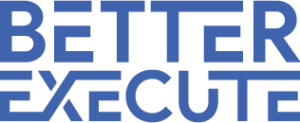Expanding your team is a crucial decision that should align with your company’s growth and strategic goals. By recognizing indicators of overworked teams and using key performance metrics, you can determine the best timing to expand. This ensures sustainable progress and higher productivity.
Key Takeaways:
- Watching for signs of team overwhelm, like high overtime and increased sick leave, can highlight the need for more staff.
- Aligning team expansion with business growth and strategic projects helps maximize the impact of new hires.
- Evaluating productivity and project completion rates shows whether your current team size meets business objectives.
- Filling skill gaps with well-defined roles and comprehensive onboarding ensures operational efficiency and keeps employees engaged.
- Embracing remote hiring and modern onboarding techniques supports adaptability and overall business success.
Recognizing Overworked Teams
Keeping a watchful eye on employee workload can be a game-changer for maintaining team well-being. Regularly review satisfaction surveys to spot signs of overwhelm. Are your team members clocking consistent overtime? Do they seem burnt out? These are red flags. A staggering statistic reveals that 20% of employees leave their jobs within the first 45 days due to excessive demands.
To get ahead, monitor these indicators closely:
- Consistently high levels of overtime.
- Increased frequency of sick leave.
- Declining job satisfaction scores.
- Reduced productivity and engagement.
Simple changes can prevent these issues, ensuring your team stays motivated and efficient. Consider streamlining tasks, setting clear priorities, and incorporating regular breaks to foster a healthier work environment.
Timing Your Team Expansion
Expanding your team should happen in tandem with periods of business growth and strategic development into new markets. This alignment helps maximize your investment in new hires and ensures you’re adding team members when their contributions will most significantly impact the business. Hiring at the right time can transform the energy of your organization, creating momentum and driving further growth. However, it’s worth remembering that adding a new employee isn’t just about increasing your capacity; it also represents a financial commitment, with hiring costs averaging around $4,425.
Therefore, consider these factors before making your next hire:
- Identify Growth Opportunities: Look for clear indications of business growth where additional skills or manpower can propel expansion.
- Strategic Planning: Assess whether entering a new market or launching a new product line is imminent, requiring fresh expertise on your team.
- Financial Health: Ensure your business can comfortably absorb the hiring costs without straining resources.
By synchronizing team expansion with these elements, you’re not only enhancing your business capacity but also investing in a framework for sustainable progression. Understanding when to expand is essential, and making informed decisions will serve as a cornerstone for long-term business success.
Indicators for Team Growth
Recognizing when to expand your team involves a thorough analysis of various performance metrics. By closely monitoring productivity and project completion rates, one can gauge whether the current team size is sufficient to meet your business goals. Let’s consider several key performance indicators (KPIs) to assess staffing needs effectively:
- Productivity metrics: This involves evaluating output per employee or team. If your team’s productivity isn’t increasing proportionally with workload, it might be time to consider hiring more staff.
- Project completion rates: Frequent delays in project deadlines could signal understaffing. It’s vital to track how often projects miss their deadlines and scrutinize if it’s due to heavy employee workloads.
Utilizing SMART goals ensures you set precise targets that your team can realistically achieve. SMART goals help in defining clear, actionable objectives that align with broader business ambitions, providing tangible benchmarks to determine if your current team can meet expected outcomes.
Moreover, effective onboarding processes are crucial when expanding your team. Statistics show that structured onboarding can boost new hire retention by up to 82%, ensuring that your investment in recruitment translates into long-term employee engagement and productivity. Quality onboarding not only retains talent but also accelerates their integration into your team, making them productive members more quickly. This combination of using data analysis and setting clear, achievable goals ensures that your team remains aligned with your company’s growth objectives.
Filling Skill Gaps with Purpose
Identifying and hiring for critical positions is essential for maintaining operational efficiency. Focusing on these gaps ensures your team can handle growing demands. A surprising 60% of employers report unclear onboarding goals, highlighting the need for strategic decisions in filling roles. To combat these gaps, prioritize:
- Clearly defined job roles to enhance productivity.
- Comprehensive onboarding that aligns with company goals.
- Continuous employee development to adapt to new challenges.
Companies benefit by selecting candidates with the necessary skills and aligning them to their strategic objectives. This approach not only fills skill gaps but also boosts overall team performance. As you aim to fill these key positions, consider how Better Execute can support your hiring strategy, ensuring you have the right talent to achieve clarity and sustainable growth.
Adapting to Modern Hiring Trends
Remote hiring has become a significant strategy for businesses aiming to adapt to the new work environment. Approximately 18.9% of companies have continued to embrace the flexibility of remote work post-COVID. This shift has been bolstered by digital tools that streamline onboarding, ensuring a smooth integration of new team members regardless of location.
For efficient adoption of these modern hiring practices, consider the following tactics:
- Implement virtual collaboration platforms to enhance communication.
- Use digital onboarding software to standardize training processes.
- Regularly update your technology to support remote operations efficiently.
These steps can help your company align with current trends, ensuring you’re not just keeping up but excelling in today’s dynamic hiring landscape. Embracing these practices not only enhances your team’s adaptability but also contributes to long-term growth and success.
Strategic Onboarding for Success
New hires thrive when they experience seamless integration, starting even before their official first day. Only 12% of new employees report a positive onboarding experience, indicating significant scope for improvement. Effective onboarding begins with preboarding strategies that engage and prepare newcomers early.
Create an onboarding process that spans several key stages:
- Preboarding Preparation: Before they arrive, provide access to online resources and introduce them to the team virtually.
- Comprehensive Orientation: Schedule sessions that cover company culture, values, and mission.
- Role-Specific Training: Ensure training is aligned with their job responsibilities.
- Mentorship Programs: Pair new hires with experienced team members who can guide them through their first months.
Implementing these steps not only enhances the onboarding process but also boosts overall morale and retention. By investing in a structured approach, your team is set up for lasting success.


